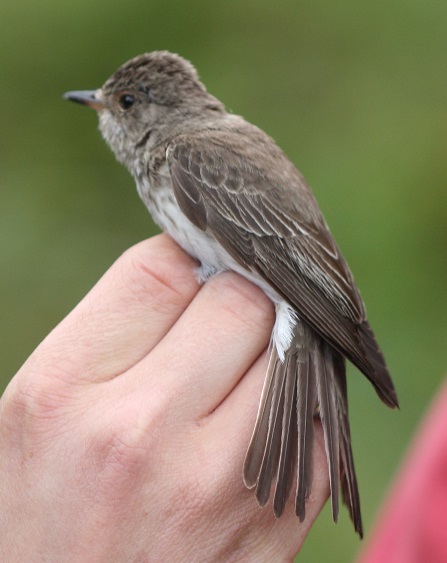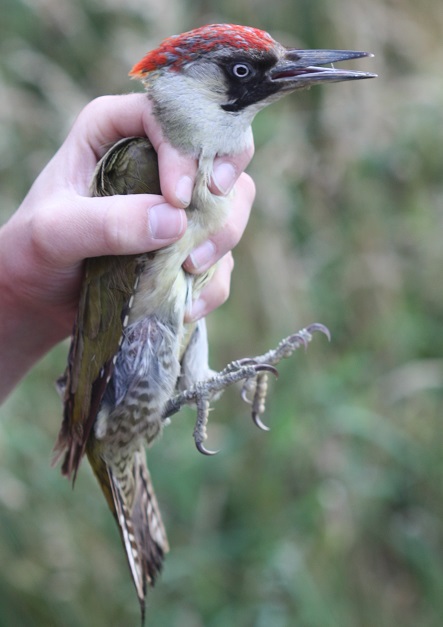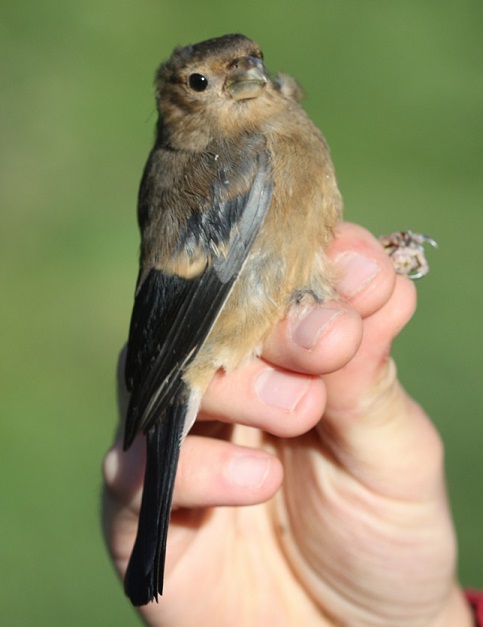Lower Moor Farm: Thursday, 10th July 2017: CES10
With Wednesday being rained off, we took advantage of a cracking day's weather forecast to run CES 10 on Thursday. Fortunately, both Jonny and David were available to help out. You cannot start a session better than to catch a Sparrowhawk before you have even finished opening the net ride in which you caught it (okay, catching a Yellow-browed Warbler in that particular net ride last autumn is a bit better). Jonny identified it straightaway: Woodpigeon he shouted, as he ran to extract it. Unfortunately for him, he went to the wrong side of the net and I actually extracted the bird. That is our second of the year, after a barren year in 2016.
We had a smaller catch than for the same session last year but it was a decent haul, with a good variety. The catch was; Sparrowhawk 1; Treecreeper (1); Blue Tit 3(2); Great Tit 1; Wren 3(1); Dunnock 5(1); Robin 1(1); Song Thrush (1); Blackbird 1(2); Blackcap 4(3); Garden Warbler 3; Chiffchaff 4(1); Willow Warbler 2; Goldcrest (1); Bullfinch 1(2). Totals: 29 birds ringed from 12 species; 16 birds retrapped from 11 species, making 45 birds processed from 15 species.
As is par for the course, the majority of the catch were juveniles: 36 of them. The Sparrowhawk was a juvenile male bird. We certainly catch males rather than females (4 to 1, currently). This could have something to do with the difference in size: the smaller males getting caught in the pockets of the nets, the females being that much larger they tend to bounce off. We were slightly disappointed not to catch any Sedge Warblers: it has been a blank year so far, but there was plenty of their chattering going on in the bushes alongside the boundary stream, but they never got close to our nets.
We had a lot of interaction with interested members of the public: particularly, we did a brief ringing demonstration to the children of the Wildlife Splash group, led by Dean and Rachel from the Wildlife Trust. It is always great fun to see how children relate to close encounters with our birds. There was also one slightly worrying interaction: we exchanged pleasantries with a couple walking their dog. About 30 minutes later Neil, the Reserves Manager, arrived to ask us how many dead Wrens we had in the nets that session. The answer was none. Apparently, these two had gone to the visitor centre and complained that there was a dead Wren in our nets and they have been unable to find us to tell us. How do you explain that? We checked with the staff members involved so we are confident that it was the couple we had a friendly exchange with. You know how, in the social media age, that sort of misinformation spreads in attempts to bring activities like ours into disrepute, so why do people do it? For the record, natural mortality of juvenile birds is 70% to 80% by the end of their first winter and 40% to 50% per annum for those that survive beyond that. Less than one bird in one thousand dies as a result of our ringing activities and, as a result of the information our ringing provides, many more birds survive that might otherwise not. ST/JC/DW



